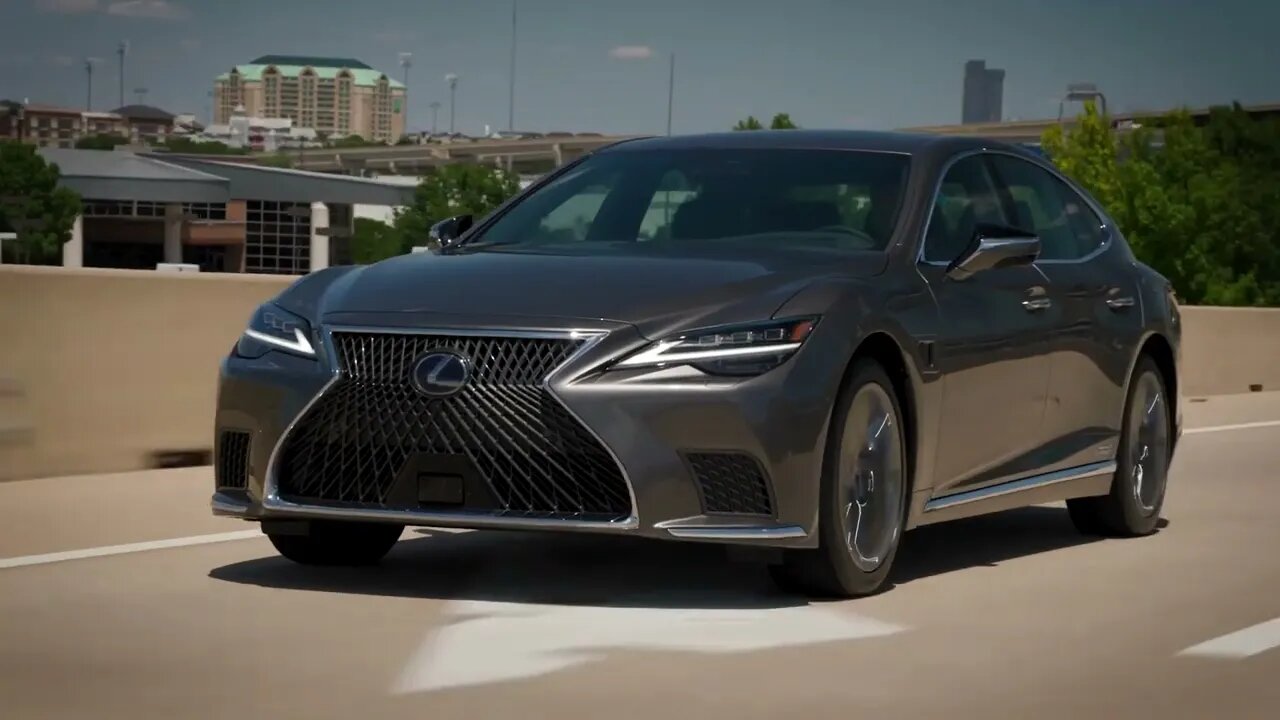Premium Only Content

Lexus Teammate Overview
Nothing reveals Toyota's conservative approach to self-driving technology more than the name it has given its first advanced Level 2 system. Unlike automakers that describe their systems as super or some sort of automatic pilot, Toyota and Lexus have gone with a quieter name: Teammate.
That doesn't mean this driver-assistance system isn't as capable as Cadillac's SuperCruise, for example, but it does hint at how careful Toyota is being as it slowly introduces cars that can (barely, for now) drive themselves. Similar to GM’s SuperCruise and Ford’s upcoming BlueCruise, Toyota’s new system allows for extended periods of hands-free driving on limited-access highways.
When Teammate debuts in the U.S. market in select 2022 Lexus LS500h models with all-wheel drive this fall, it will have two components: Advanced Drive and Advanced Park. We were able to test the driving portion of the system during near Toyota's North American headquarters in Plano, Texas.
How It Works
Activating Advanced Drive is similar to engaging cruise control. When the car is on a limited-access highway—the only kinds of roads it can operate on for now—the driver information screen briefly displays "Vehicle Position Initializing." Then, once positioned, the "Radar Ready" message in the driver information screen changes to say "Advanced Drive Ready." Then the display completely changes to show digital representations of the surrounding traffic. It also notifies the the driver to either hold the steering wheel (if there's a grey color scheme) or to go hands-free (when the screen turns blue).
As the name suggests, Teammate is constantly checking in with the human driver to make sure they are paying attention and ready to take control of the vehicle again. The colors on the screen are the most obvious signal, but a voice also announces when certain things turn on or off. If you input a destination, the navigation system joins the team to provide countdown counters on the screen when, for example, you're a few miles away from your exit, giving you plenty of time to switch back to being a driver again. There are audible, visual and physical indicators to tell you when to take control, with the seat belt tugging your torso as a last resort to get your attention. It all takes some getting used to.
"I don't know if it's a full re-learning," Derek Caveney, executive engineer for Toyota Motor North America R&D, who helped develop the system, told C/D. "But it is a system where you're becoming more of a supervisor rather than an operator."
In non-emergency situations, Teammate targets a minimum four-second handover time for when the driver has to resume control. "That type of transition, we believe, is very safe and allows the driver to become reengaged fully before having to be in control," he said.
Toyota believes that this reengagement is important. If you're not actively driving, your mind can wander. This is why Advanced Drive will not allow the driver to go hands-free indefinitely. At some point in its operation—Caveney wouldn't be more precise than to say that the upper limit is "tens of minutes"—Teammate will ask the driver to grab hold of the wheel again for a few seconds before going back to hands-free mode.
"The idea there is we can't really understand the mental state of the driver," he said. "We can see their visual state, where they're looking, … but we don't know what they're thinking, so we ask them to touch the steering wheel just to make sure that they're aware of the warning we're giving them, so we can build that relationship between the car and the driver."
Getting the car to automatically change lanes on a somewhat busy Texas highway requires more than just moving the turn signal. Even when operating in hands-free mode, the car requires you to glance at the side mirrors to confirm that there's nothing in the way if you want the car to shift lanes. The system of course has its own sensors, but it wants your human input as well.
#WikiCar
#LexusTeammate
-
 3:20
3:20
A collection of the best cars in the world
2 years ago2023 Nissan Z Overview
1711 -
 DVR
DVR
The Nerd Realm
4 hours ago $0.47 earnedHollow Knight Voidheart Edition #09 | Nerd Realm Playthrough
8.66K2 -
 1:21:14
1:21:14
Awaken With JP
6 hours agoDrones are for Dummies - LIES Ep 70
91K42 -
 1:47:29
1:47:29
vivafrei
4 hours agoJustin Trudeau Regime ON THE VERGE OF COLLAPSE! And Some More Fun Law Stuffs! Viva Frei
69.5K40 -
 1:52:22
1:52:22
The Quartering
4 hours agoNew Brett Cooper Drama, Madison Feminist Manifesto, Sydney Sweeney Outrage & More
75.9K23 -
 8:01
8:01
Breaking Points
6 hours agoWhy Japan Has ZERO Fat People And Other Lessons For USA
24.2K17 -
 1:17:07
1:17:07
Vetted
12 hours agoRadioactive Material Lost in Transit, Drones Linked?
21.5K7 -
 LIVE
LIVE
SilverFox
22 hours ago🔴LIVE - Elden Ring ZERO HP play through - Part 2
309 watching -
 LIVE
LIVE
Phyxicx
5 hours agoBeating Ruby/Emerald Today - OG Final Fantasy VII - 100% Playthrough - 12/17/2024
62 watching -
 1:57:07
1:57:07
The Charlie Kirk Show
5 hours agoAfter Hegseth, RFK + The Fall of Trudeau? + Trannies On Teams | Sen. Scott, Lewandowski, Frei
132K36